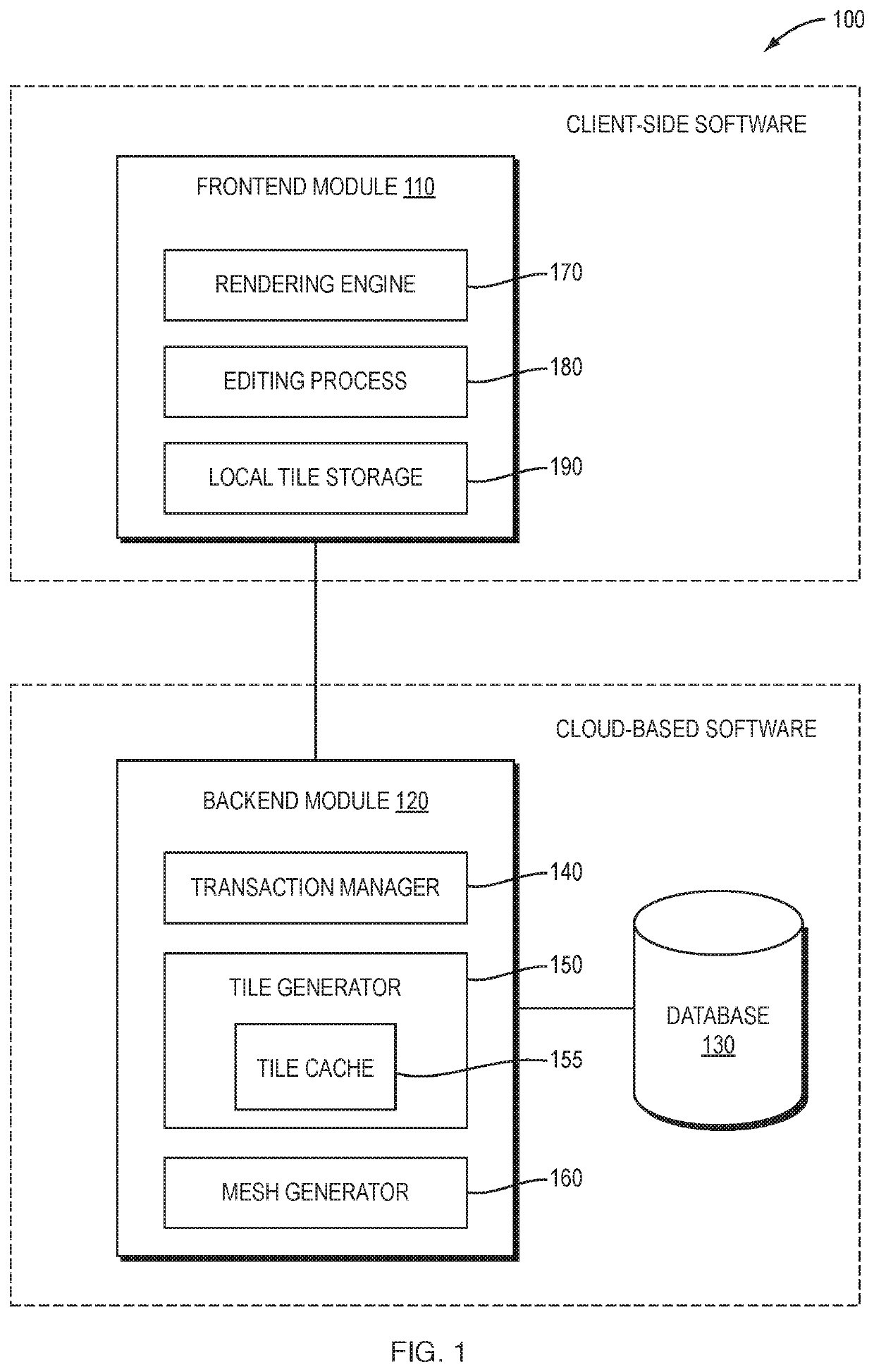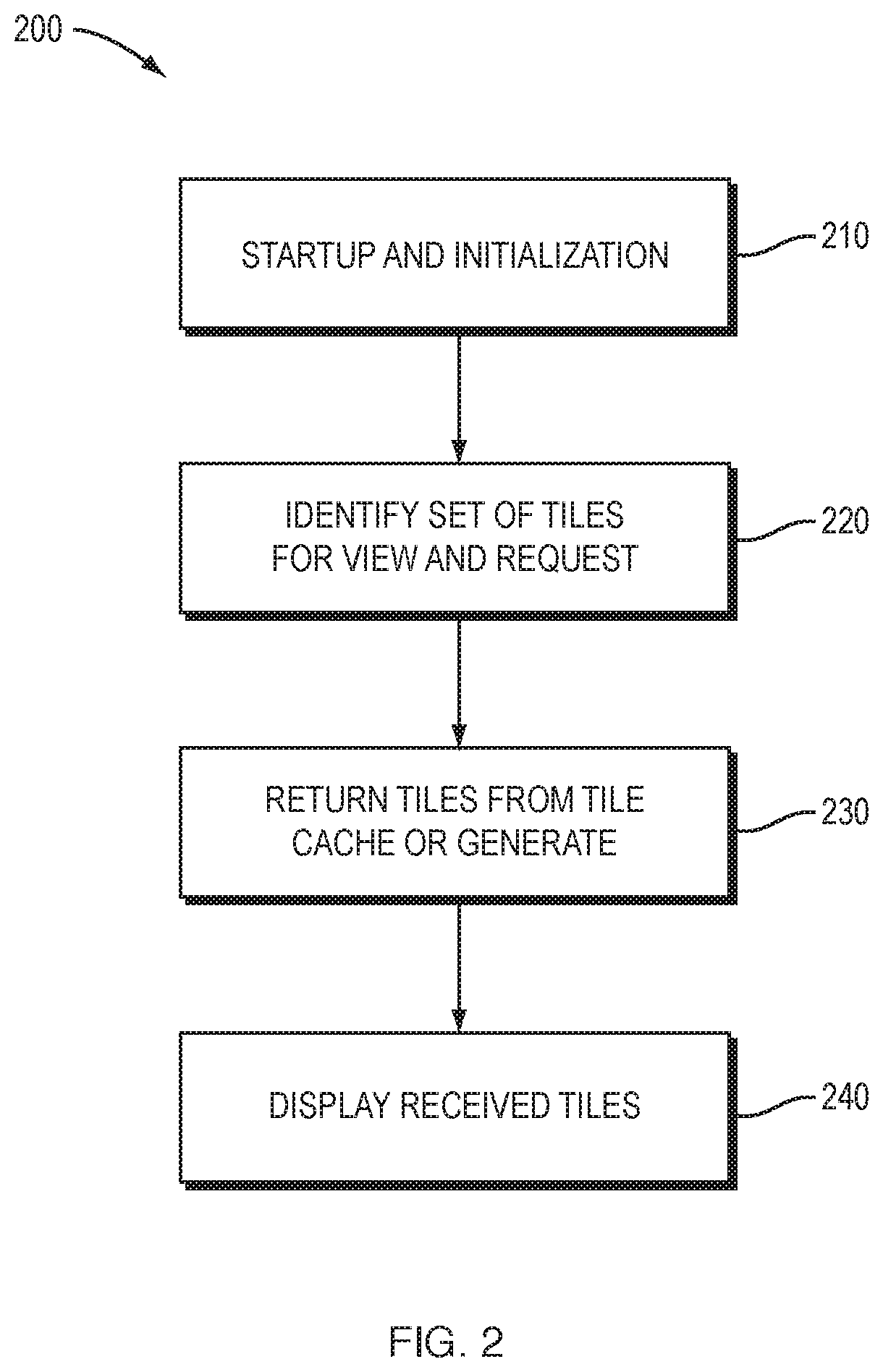Visualization of massive 3D models in interactive editing workflows
a visualization and workflow technology, applied in the field of computer-based three-dimensional (3d) modeling, can solve the problems of difficult to provide acceptable results in interactive editing workflows, out-of-date polygon meshes, and large scope of 3d models
- Summary
- Abstract
- Description
- Claims
- Application Information
AI Technical Summary
Benefits of technology
Problems solved by technology
Method used
Image
Examples
Embodiment Construction
[0024]FIG. 1 is a high-level block diagram of an example software application 100 for visualizing a 3D model. The application 100 may be a portion of an infrastructure modeling software architecture, in which case the 3D model may be a 3D model that represents infrastructure (e.g., buildings, plants, roads, railways, bridges, utility and communications networks, etc.). Alternatively, the application 100 may be a portion of another type of software architecture and the 3D model may represent other types of objects in the real world. The application is divided into a frontend module 110 and a backend module 120. The frontend module 110 and the backend module 120 may be executed on the same computing device, or on different computing devices. In one implementation, the frontend module 110 may be part of client-side software executing on a computing device local to an end-user which communicates via a network (e.g., the Internet) with the backend module 120 that is part of cloud-based s...
PUM
 Login to View More
Login to View More Abstract
Description
Claims
Application Information
 Login to View More
Login to View More - R&D
- Intellectual Property
- Life Sciences
- Materials
- Tech Scout
- Unparalleled Data Quality
- Higher Quality Content
- 60% Fewer Hallucinations
Browse by: Latest US Patents, China's latest patents, Technical Efficacy Thesaurus, Application Domain, Technology Topic, Popular Technical Reports.
© 2025 PatSnap. All rights reserved.Legal|Privacy policy|Modern Slavery Act Transparency Statement|Sitemap|About US| Contact US: help@patsnap.com



